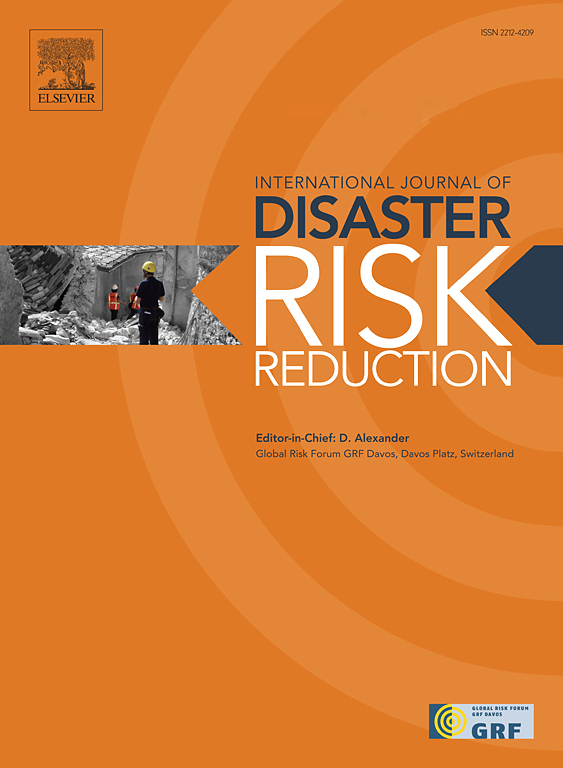Flood risk communication: Challenges and opportunities in Brazilian cities
IF 4.2
1区 地球科学
Q1 GEOSCIENCES, MULTIDISCIPLINARY
International journal of disaster risk reduction
Pub Date : 2025-03-01
DOI:10.1016/j.ijdrr.2025.105292
引用次数: 0
Abstract
How flood risk is communicated is a key factor in disaster risk reduction. This is particularly true in the Global South countries, where several regions are susceptible to extreme weather events and have a significantly vulnerable population, deprived of urban services and facilities. Therefore, this research set out to assess the incorporation of flood risk communication into planning and public management in brazilian cities. We analysed official documents and carried out semi-structured interviews with local officials linked to the disaster risk management to assess their practices and identify any gaps in flood risk communication. The results indicate that the limited perception of risk communication as purely an emergency measure is a significant barrier. A clear reliance on technological infrastructure was also noted, and this limits its effectiveness in areas with poor internet access. Customising messages for different audiences and adapting complex technical information were also identified as critical challenges. An informal assessment of risk communication strategies is a frequent practice. Hence, to improve risk communication, a multi-faceted approach is needed, including continuous education, personalisation of messages, use of multiple channels, training of professionals, and investment in technological infrastructure. Collaboration between sectors and the creation of formal assessment methods are crucial for strengthening the resilience of communities, improving management, and reducing the impacts of disasters. This study contributes to the existing literature by providing insights into the challenges faced by cities in implementing flood risk communication, offering recommendations to enhance the resilience of vulnerable communities and support evidence-based policy development.

求助全文
约1分钟内获得全文
求助全文
来源期刊

International journal of disaster risk reduction
GEOSCIENCES, MULTIDISCIPLINARYMETEOROLOGY-METEOROLOGY & ATMOSPHERIC SCIENCES
CiteScore
8.70
自引率
18.00%
发文量
688
审稿时长
79 days
期刊介绍:
The International Journal of Disaster Risk Reduction (IJDRR) is the journal for researchers, policymakers and practitioners across diverse disciplines: earth sciences and their implications; environmental sciences; engineering; urban studies; geography; and the social sciences. IJDRR publishes fundamental and applied research, critical reviews, policy papers and case studies with a particular focus on multi-disciplinary research that aims to reduce the impact of natural, technological, social and intentional disasters. IJDRR stimulates exchange of ideas and knowledge transfer on disaster research, mitigation, adaptation, prevention and risk reduction at all geographical scales: local, national and international.
Key topics:-
-multifaceted disaster and cascading disasters
-the development of disaster risk reduction strategies and techniques
-discussion and development of effective warning and educational systems for risk management at all levels
-disasters associated with climate change
-vulnerability analysis and vulnerability trends
-emerging risks
-resilience against disasters.
The journal particularly encourages papers that approach risk from a multi-disciplinary perspective.
 求助内容:
求助内容: 应助结果提醒方式:
应助结果提醒方式:


